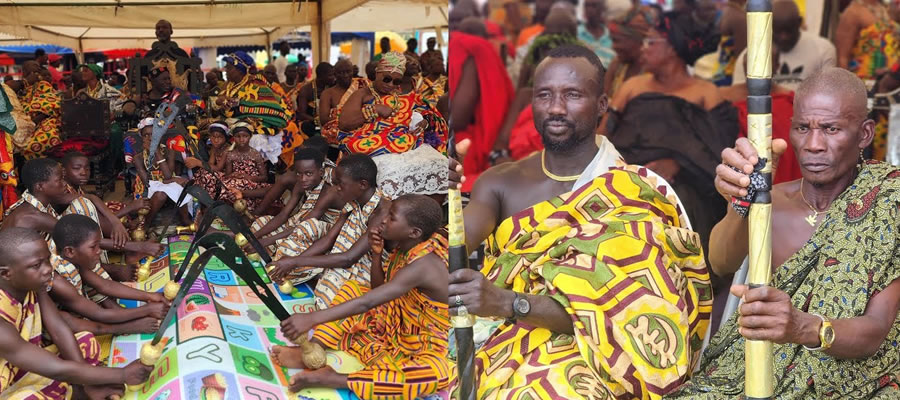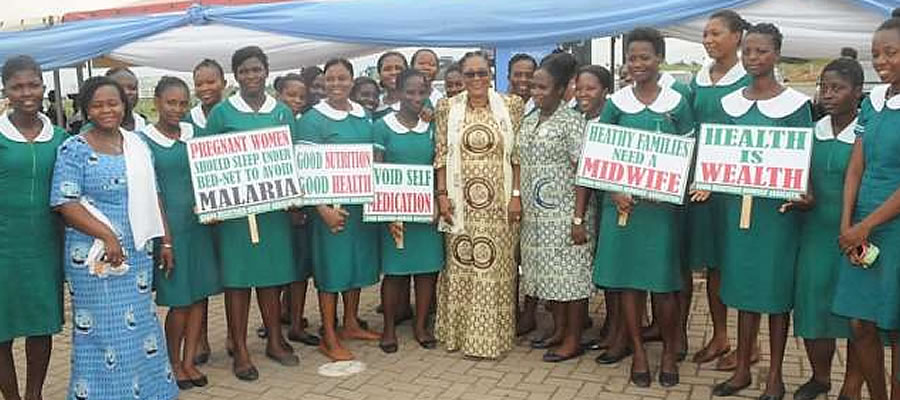

Culture
Sekondi Takoradi Metropolitan Assembly traditionally can be classified into three paramount areas namely, Sekondi, Essikadu, and Takoradi, with Nana Kobina Nketsiah V as the paramount chief for the Essikadu paramount. Nana Whinney for now (from 2013) is the caretaker paramount chief of Sekondi paramount, Whilst Osahene Katekyi Busumakura III, is the paramount chief of Takoradi traditional area.
The traditional councils are made up of various sub-chiefs and the councils meet regularly to discuss various issues related to the development of the traditional areas. The communal spirit is quite low in the urban areas which comprise 96.4% of the populace in areas such as Takoradi, Sekondi, Tanokrom, and Kwesimintsim communities. However, there is a high communal spirit among those living in the peri-urban areas such as Whindo, Assakae, Mpatado, Kansaworado, and Enoe.
There is a need to promote the spirit of communalism among the people to aid the development of the metropolis. The inhabitants of Sekondi-Takoradi are very friendly and exhibit hospitality. The majority of the population speak Fante but the main local dialects are Ahanta, Nzema, and Wassa. English is however the official language. The distribution of the proportion of ethnic groups in the SekondiTakoradi Metropolis is as follows Fante 46.5%, Ahanta 12.2%, Asante 12.2%, Nzema 3.8%, and Wassa 3.0%.
The proportion of the rest of the ethnic groups is below 3%. 1.2.8 Festival The main festival celebrated by the people in the Metropolis is Kundum Festival. It is celebrated on different dates by the various traditional councils and communities. The celebration often takes place in June and July and the dates rotate from community to community. The Kumdum festival has become a symbol of unity and development as it provides an occasion for residents to meet together for discussion of development projects.
The occasion is also used to settle disputes which might have arisen among the people in the year. Another festival that has gained much popularity in recent times is the Masquerading festival. This festival is organized by the Sky group of companies and brings together masquerading groups in the entire Metropolis.
The celebration also involves dancing along the principal streets of the city by the various groups before a grand durbar at Takoradi. All these festivals attract a large following and therefore a good means of organizing the people for socio-economic development through talk and fund-raising activities to promote local development through culture. 1.2.9 Religion Within the metropolis, Pentecostal or Charismatic (34.7%) dominates in the religious affiliation category followed by the Protestants (25.6%), Catholic (14.3%). Regarding the sexes, 4.7 percent of males have no religious affiliation whereas the female proportion is 2.2 percent (Population and Housing Census, 2010).
Date Created : 2/5/2025 2:11:01 AM











 facebook
facebook
 twitter
twitter
 Youtube
Youtube
 +233 593 831 280
+233 593 831 280 0800 430 430
0800 430 430 GPS: GE-231-4383
GPS: GE-231-4383 info@ghanadistricts.com
info@ghanadistricts.com Box GP1044, Accra, Ghana
Box GP1044, Accra, Ghana